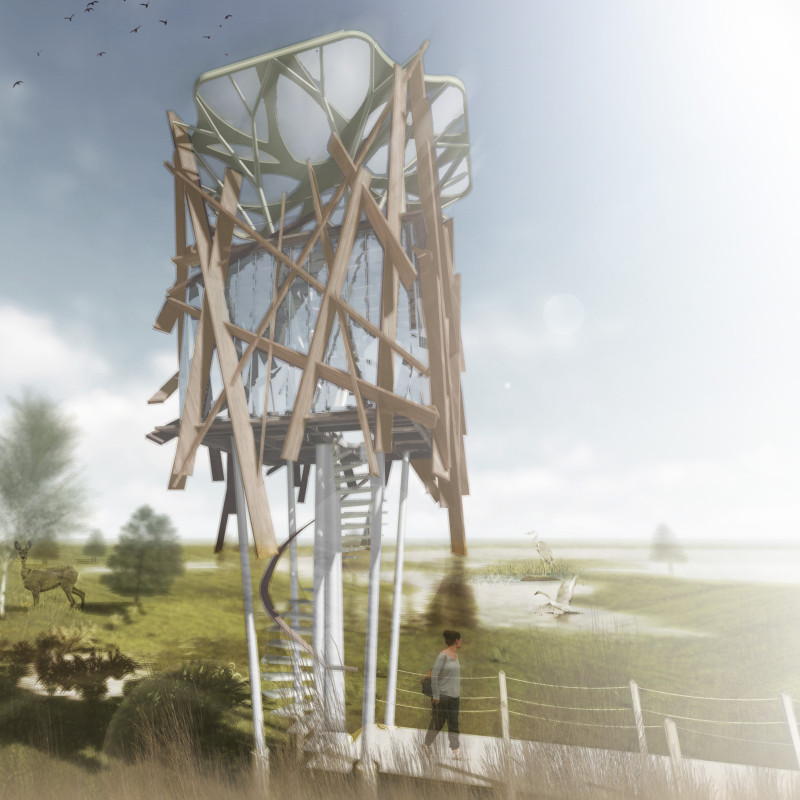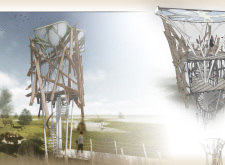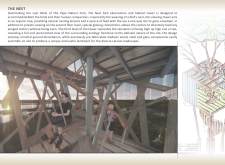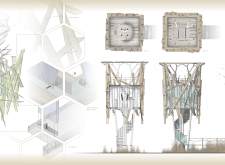5 key facts about this project
At its core, The Nest symbolizes the connection between humanity and the natural world. Its architectural form is inspired by the shape of a bird's nest, reflecting an intrinsic understanding of the surrounding environment. This representation is not merely aesthetic; it reflects a broader commitment to ecological stewardship. The design encourages visitors to appreciate the diverse avian wildlife, fostering a sense of responsibility towards conservation efforts.
The layout of The Nest is characterized by multiple observation levels, each thoughtfully designed to provide optimum vantage points for observing birds in their natural habitats. Each level is equipped with features that ensure the comfort and safety of users while also enhancing their experience. This multi-tiered approach allows visitors to engage with the environment from various heights and perspectives, fostering a deeper connection with the landscape.
Material selection plays a crucial role in the project’s overall impact. The primary structure is composed of steel, offering both stability and durability while allowing for a modular design that minimizes construction time and environmental disturbance. Complementing the steel framework, modular wood elements are incorporated to create warmth and visual appeal, maintaining a balance between strength and aesthetic sensibility. A key element of the design is the application of one-way mirror glass, which facilitates unobtrusive birdwatching. This choice enhances the observational experience, enabling visitors to observe birds without disrupting their activities, while effectively camouflaging the structure within the park's environment.
Unique design approaches are evident throughout the project. The incorporation of organic geometry in the architectural form serves to minimize visual clutter, allowing The Nest to blend into the natural landscape seamlessly. Rooftop elements and open-air components promote direct interaction with the surrounding nature, emphasizing a holistic experience for observers. The structure's design strategically avoids extensive ground disturbance, employing prefabricated components that minimize impact on local flora and fauna.
This integration of sustainable practices is a fundamental aspect of The Nest. The materials and construction methods reflect a dedication to reducing the project’s carbon footprint. By opting for less invasive construction techniques, the project sets a commendable example of how architecture can coexist with the natural environment, allowing for a delicate balance between human activity and ecological integrity.
In summary, The Nest is a testament to thoughtful architectural design that prioritizes both people and nature. It serves as a platform for observation and education, encouraging a deeper understanding of avian biodiversity while championing sustainable practices. The project effectively showcases how architecture can facilitate human experiences in nature without compromising ecological principles. To delve deeper into the architectural plans, sections, designs, and ideas behind this notable project, readers are encouraged to explore additional presentation materials available for a comprehensive understanding of its intricacies.


























